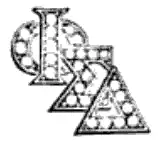Phi Sigma Delta
Phi Sigma Delta (ΦΣΔ), colloquially known as Phi Sig,[1] was an American collegiate fraternity established in 1909 with a predominantly Jewish membership at Columbia University.[2] It eventually opened at least more than sixty chapters. Phi Sigma Delta merged with Zeta Beta Tau in 1970, retiring its original name.[3]
| Phi Sigma Delta | |
|---|---|
| ΦΣΔ | |
 | |
| Founded | November 10, 1909 Columbia University |
| Type | Social |
| Affiliation | NIC (former) |
| Emphasis | Jewish |
| Scope | National |
| Member badge |  |
| Colors | White and Purple |
| Publication | The Deltan |
| Chapters | 63 |
| Colonies | 3 |
| Merged with | Zeta Beta Tau (1970) |
History
Phi Sigma Delta was founded at Columbia University by a group of Jewish students who previously "seemed unable to find [a] proper opportunity for the campus fellowship they were seeking.".[2] The founding meeting was held on November 10, 1909, at Maxwell Hyman's house at 22 Mount Morris Park West in New York City.[2] The fraternity's eight founders were:[3]
- William L. Berk
- Herbert L. Eisenberg
- Maxwell Hyman.
- Alfred H. Iason
- Joseph Levy
- Herbert K. Minsky
- Joseph Shalleck
- Robert Shapiro
The purpose of the fraternity was "to foster and nurture the comradeship of its founders."[4] The founders met weekly at member homes, designing the constitution, ritual, and badge.[3] Early in 1911, the fraternity initiated its first new members.[5] By September 1911, the group secured a two-room suite chapter home in Hartley Hall, a dormitory on the Columbia campus. The fraternity was incorporated in the State of New York on June 1, 1912.[3] In 1923, the fraternity had an office for its national headquarters in New York City.[5]
One of the milestones of the fraternity came in 1934 when Phi Sigma Delta began a program to shelter German student refugees at various chapter houses around the country.[3] As America entered World War II, the national manpower drain led to a standstill in the fraternity's expansion program.[3] While some chapters suspended operations, fourteen continued to operate.[3] After the war, alumni paid for memorial plaques for each chapter, noting those who had died during wartime service.[3]
On April 6, 1959, Phi Alpha fraternity merged with Phi Sigma Delta, adding sixteen active chapters that were primarily located in the East.[2] There were three campuses where both groups had a chapter; there were mergers on two campuses while one Phi Alpha chapter was released to join another fraternity.[2] The new chapters were assigned names beginning with the Greek letter Phi.[2]
The fraternity chartered eight more chapters in the subsequent decade.[5] However, it considered another merger for financial and other difficulties in the later 1960s.[5] Negotiations were successfully concluded in 1969 for Phi Sigma Delta to merge into the rapidly expanding Zeta Beta Tau fraternity.[2] At the time of its merger, Phi Sigma Delta had 49 active chapter and 22 inactive chapters, with a total of 19,500 initiated (alumni and active) members.[2][4]
Symbols and traditions
The fraternity's colors are purple and white.[6] Its badge consisted of three Greek letters ΦΣΔ joined obliquely (~angled), in gold, with twenty-four crown pearls set into the gold letters.[2] The pledge pin was round, with a white palm and pyramid set into a purple background.[2]
The official song was the "Phi Sigma Delta Hymn", generally known as "We Sing To Thee, Phi Sigma Delta." It was adopted in 1930.[2] Another song written for the fraternity, c.1923, was "Phi Sigma Delta Forever," words by Herbert Morse & Herman Block and music by Nathan Grabin & Herman Block.
Its quarterly magazine was The Deltan.[5] Phi Sigma Delta also published a member's directory, a pledge manual, and a songbook.[5]
Chapters
Graduate clubs
Phi Sigma Delta had graduate clubs in Albany, New York; Chicago, Illinois; Cleveland, Ohio; Dallas, Texas; Los Angeles, California; New York City, New York; Philadelphia, Pennsylvania; and Providence, Rhode Island.[6]
Notable members
- Alan J. Altheimer (Alpha), attorney and president Jewish Council on Urban Affairs
- Eric Berg (Zeta), artist[7]
- Arthur Levitt Sr. (Alpha), lawyer and New York State Comptroller
- Robert Q. Lewis (Eta), radio and television entertainer, comedian, game show host, and actor
- Peter Morton (Iota), co-founder of the Hard Rock Café
- Arthur Louis Schechter (Lambda), attorney and the United States Ambassador to the Bahamas
- Nelson Stamler (Upsilon), New Jersey State Senate
- Morris Weinfeld, lawyer, judge, and representative in the New York General Assembly[8]
- Peter Yarrow (Alpha), musician and member of Peter, Paul and Mary.
References
- This fraternity was called Phi Sig on those campuses where Phi Sigma Kappa, Phi Sigma Epsilon or Phi Sigma Sigma (sorority) had not previously established usage of that nickname.
- Anson, Jack L.; Marchenasi, Robert F., eds. (1991) [1879]. Baird's Manual of American College Fraternities (20th ed.). Indianapolis, IN: Baird's Manual Foundation, Inc. p. VIII–17–18. ISBN 978-0963715906.
- "Phi Sigma Delta". Zeta Beta Tau Fraternity. Retrieved 2023-08-07.
- "Guide to the University of Chicago, Phi Sigma Delta, Mu Chapter Records 1957". University of Chicago Library. Retrieved 2023-08-07.
- Lurding, Carroll and Becque, Fran. (May 5, 2023) "Phi Sigma Delta". Almanac of Fraternities and Sororities. Urbana: University of Illinois. Accessed August 7, 2023.
- Shepard, Francis W., ed. (1927). Baird's Manual of American College Fraternities (11th ed.). Menasha, Wisconsin: George Banta Publishing Company. p. 151 – via Google Books.
- "Phi Sigma Delta". New Fraternity Pledges. Daily Pennsylvanian. 1965-01-28. p. 5.
- Malcolm, James (1925). The New York Red Book. Albany: Williams Press. pp. 120–121 – via Google Books.